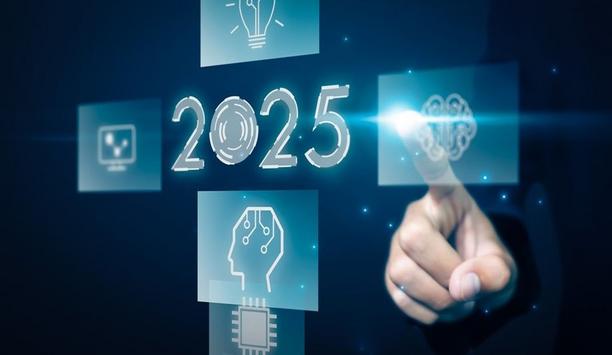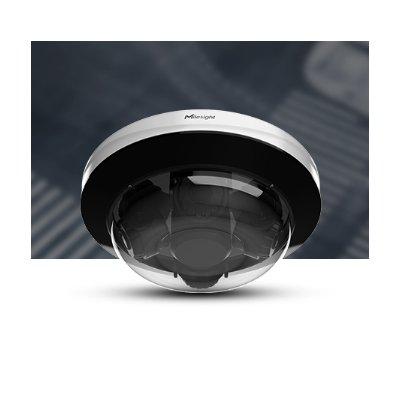What technology will impact security most in the rest of 2018?
Editor Introduction
Where does the time go? Before you know it, here we are at mid-year reflecting on an eventful first half of 2018 in the physical security market. It’s also a good time for our Expert Panel Roundtable to pause and look ahead at what we might expect in the second half of the year. We asked this week’s Expert Panel Roundtable: What technology development will have the greatest impact in the second half of 2018?
Advances in artificial intelligence (AI) and machine learning are accelerating in 2018, and we should expect to see more practical examples coming to market in our industry throughout the rest of the year. Applications are getting smarter and more useful, and users will benefit tremendously from increased automation and capabilities that will augment human decision-making. More solutions will be coming out that deliver greater precision and efficiency in understanding environments and profiling a multitude of anomalies.
Not typically security, we'll see the definite advancement of machine learning and AI technology within security applications – especially in the centralised control room spaces that today's enterprise organisations employ to ensure safety for employees and visitors. This technology will play a special role across the visual plane, being implemented in video applications to help identify anomalies in a location, and offer officials a clear path for identification and response. Adding a layer of these intelligent solutions can help an organisation achieve greater levels of situational awareness and address threats as they arise.
The hottest trend we are currently seeing in 2018 is the continued adoption of intelligent devices and automation into the security framework. We have embraced a model where our software and hardware components continually get smarter and easier for security and IT teams to manage and deploy. This reduces costs, but also increases operational efficiency. Once a panel or reader is installed, you don't have to go to it again – all updates, configurations, and monitoring are done remotely using secure protocols. For example, we have a line of readers that provide a migration path from Wiegand to OSDP over the same wiring, and without having to flash the readers. The readers intelligently see the panel is now compliant and switch to OSDP mode automatically. Smarter and more integrated systems offer trusted security with less cost and effort to manage.
When it comes to the impact that new technology developments in security can deliver, arguably more important than the security innovation itself is its connection to the digital building strategy that supports the defined outcomes for an organisation. Securely connected building systems can optimise safety, sustainability, efficiency, and financial performance while improving experiences and results for building occupants and owners. If new security developments can fit into a digital building initiative, their impact will be elevated far beyond simply improving various aspects of security – those technologies can lend themselves toward creating a truly safer, future-ready, and high-performing building.
Looking ahead to the remainder of 2018, the main focus remains on analytics. Not only could deep learning analytics actually keep promises made 15 years ago (video content analytics creating increases in operational efficiencies), but we are looking at the convergence of technology – not just integrations. The success lies in the way the deep learning engine is “trained” in image recognition. Now cameras truly recognise a person for being a person and cannot be tricked by a waving branch in the background. If we couple this technology with intelligence in how the alerts and recognised items are processed holistically, we get a whole new way of approaching security. As our analytics get smarter, so does everything around us. No longer will complementary systems be sharing discrete sets of data to slightly improve the quality of the user experience in subtle ways. Instead, data convergence will be coupled with cloud technology.
There are three core trends that are driving the physical security market forward – network-connected devices, access control as a service (ACaaS) and wireless lock sets. These developments create more functionality at the edge, cost reductions by leveraging the network infrastructure and more flexibility in how systems are managed. What these trends really point to is that consumer expectations are driving product features and development in the market. As technologies continue to become more user-friendly in the way they are available in the market, in how they are deployed and the day to day user interaction – they will have the biggest impact. The market is undergoing rapid change and the companies that are listening to their customers and can proactively address their needs will drive the industry forward and set customer expectations that others will strive to reach.
In the second half of the year, we can expect to see advanced technologies such as AI and deep learning continue to permeate the security industry. Face and license plate recognition solutions that utilise these concepts will grow and expand, as security leaders take advantage of their ability to enable quick, effective decision-making based on the most relevant information at any given time. These systems will also play a role in the most impactful development to come in 2018: robust integrations. Enterprises will increasingly demand layered solutions that combine a number of elements, such as video, access control, license-plate recognition, data analytics and more, to ensure truly comprehensive security, achieve elevated levels of intelligence and streamline business operations.
I would argue that the biggest development might not be in technology, but in how that technology is introduced into an organisation. We're seeing a lot of cloud-based applications right now getting attention, adding flexibility, scalability and the opportunity for end users to fully manage their security remotely, but the real development is how these are being brought to market. Manufacturers of these cloud-based products – particularly in access control – are working with integrators to create opportunities for recurring monthly revenue (RMR). This is a new frontier for many integrators that are used to single project installs, not the model that brings continued monitoring and revenue. The real shift will be in how this technology is introduced into the portfolio of integrator partners.
Editor Summary
Artificial intelligence and deep learning, more intelligent devices, better connectivity, data convergence and more dependence on cloud services are among the technology trends that will shape the second half of 2018, according to our Expert Panelists. In general, they see the continuation of a faster technology curve that will expand our capabilities while challenging our power to keep abreast of change.
- Related links
- ACT Access control software
- AMAG Access control software
- AMAG CCTV software
- ISONAS Access control software
- Milestone CCTV software
- Pelco CCTV software
- Pelco CCTV cameras
- ACT Access control readers
- AMAG Access control readers
- ISONAS Access control readers
- Johnson Controls Limited Access control readers
- Pelco IP cameras
Expert commentary
The key to unlocking K12 school safety grants
DownloadHoneywell GARD USB threat report 2024
DownloadThe truth behind 9 mobile access myths
Download5 surprising findings from OT vulnerability assessments
DownloadPhysical access control
DownloadClimax Mobile Lite: Advanced Personal Emergency Response System (PERS)
Milesight 4x5MP AI Multi-Directional Camera
Verkada GC31 Cellular Gateway for Seamless Device Connectivity






















